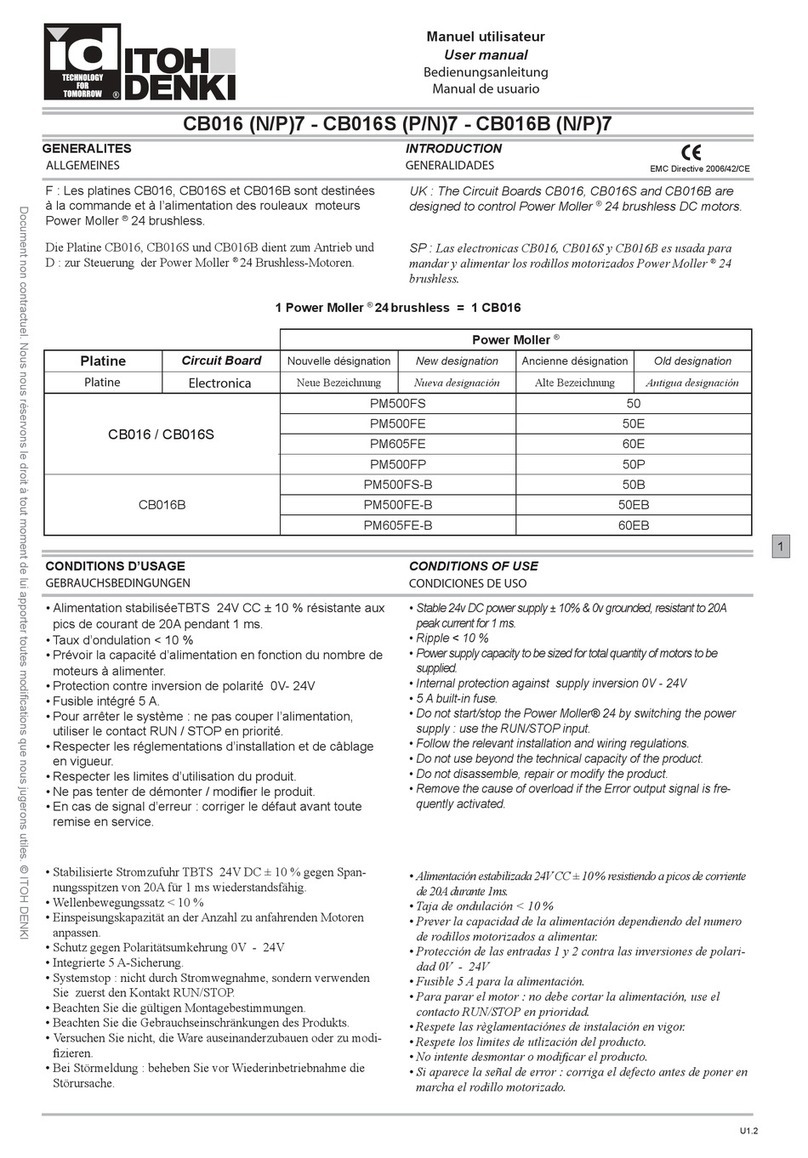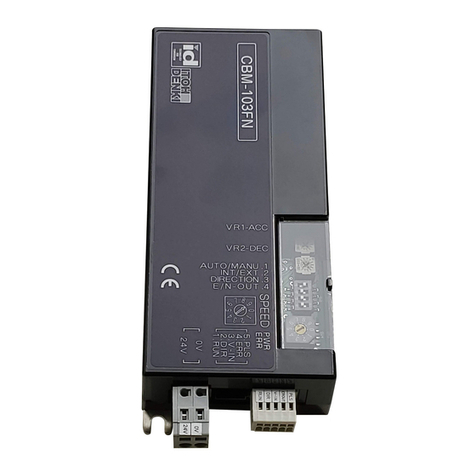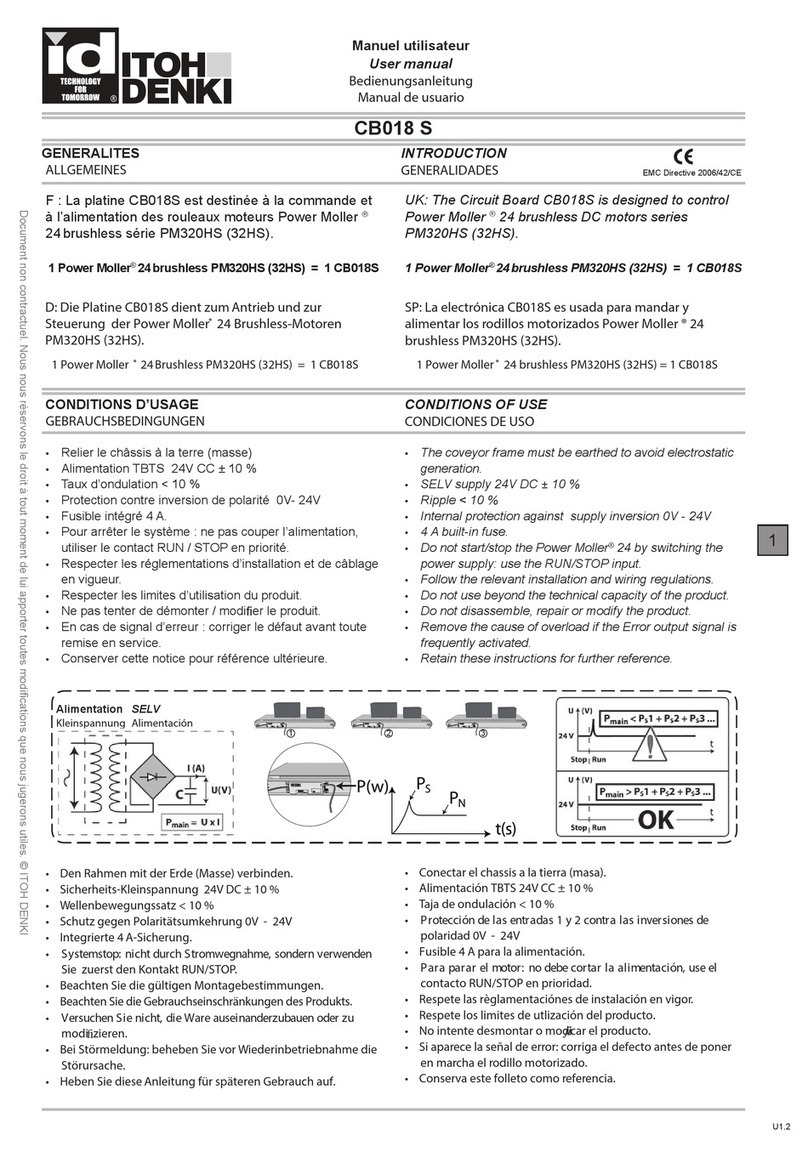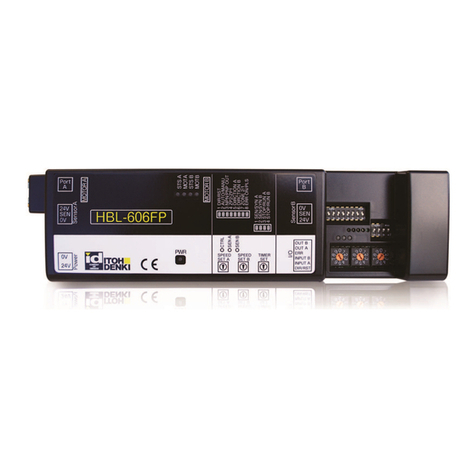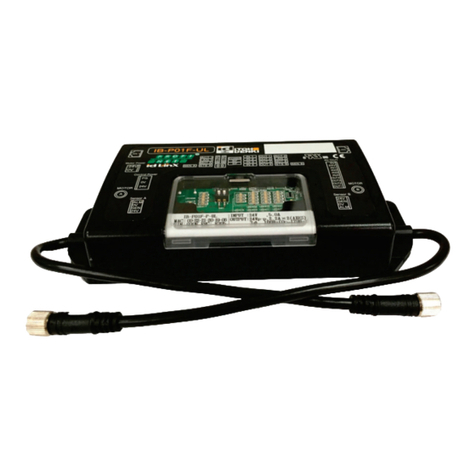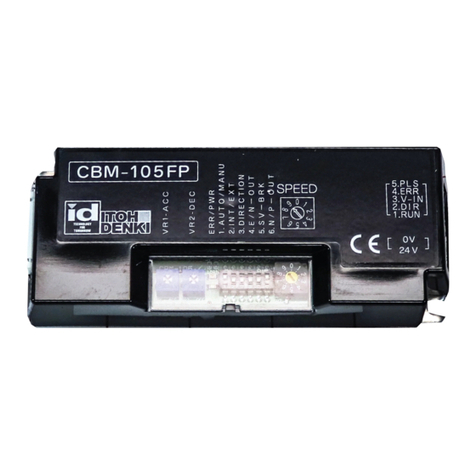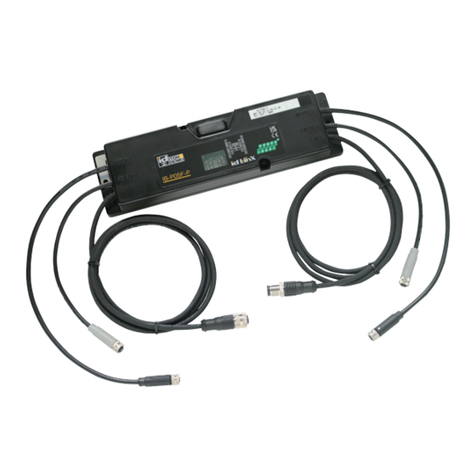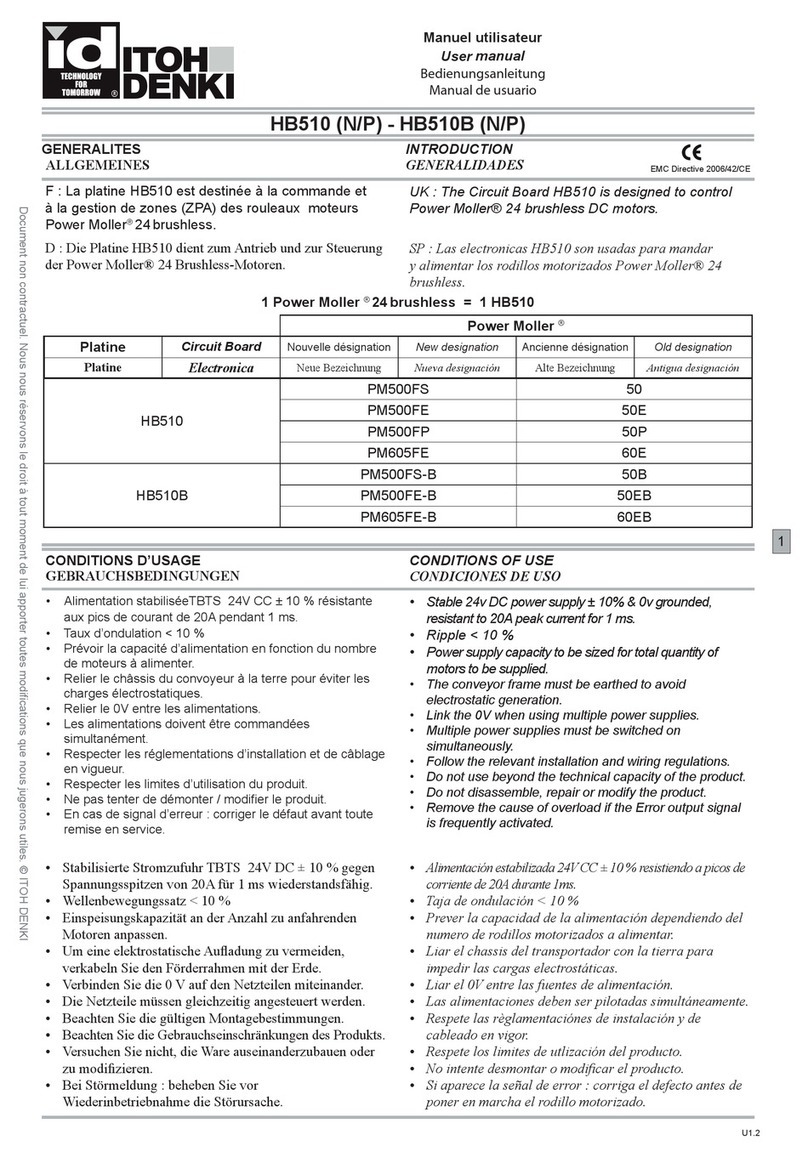
Specifications subject to change without notice
ITOH DENKI USA, INC
135 Stewart Road rev15-0115
PH: 570-820-8811 Hanover Industrial Estates
FX: 570-820-8838 Wilkes-Barre, PA 18706-1462 Page 7 of 25
Installation Precautions –
IMPORTANT, PLEASE READ BEFORE INSTALLATION
Use a sensor that would have an active
output when the zone is occupied
Example: A retro-reflective photo-
sensor would need to be dark-operate
The HBM responds to the active signal
received from the sensor to denote zone
occupation. If the incorrect type is used, the
HBM would “think” that a zone is occupied
when it is really clear. Not only would there
be problems in ZPA logic operation, but there
will also be JAM errors appearing.
system after applying
ESTOP signal
Make sure transported articles are not
between photo-sensors.
Any article between photo-sensors will not be
recognized as occupying a zone. Therefore
any upstream articles being transported may
collide into them.
Keep away from the system when it is
first powered ON. When the system is first powered ON and
there is no signal from the photo-sensor for
presence of an article, the zone will RUN for
a short time at a slow speed to receive or
advance any articles which may be between
photo-sensors. There may be a risk for
bodily injury because of moving rollers and
transported articles.
Using as a slave card be sure the timer
switch SW5 to zero (0) for slave mode This eliminates all timer functions and
communication. Roller(s) will not run on
initial start up in slave mode
RJ-45 connectors
8-wire cables
Straight-through wiring pattern
Straight-through wiring means that the
connectors on both ends of the cable are
wired in the exact same pattern.
Cross-over wiring or any other wiring pattern
will cause communication problems.
connection to PNP
output(s)
DO NOT connect an output terminal
(CN2-4, CN2-5) set for PNP directly to
0V, GND, or a low impedance input on a
controller.
When the PNP signal is active, the low
impedance input will draw a high current and
subsequently damage the output circuit.
Damage may also occur to the input circuit
on the controller.
supplies 0V line of all power supplies on the
same conveyor line (powering the
card/rollers, & controls) need to be
physically linked together.
This completes the signal path from one
section of the conveyor (powered by a power
supply) to the adjacent section of conveyor
(powered by another power supply) and
allows for proper communication through the
cable and external interfaces.
